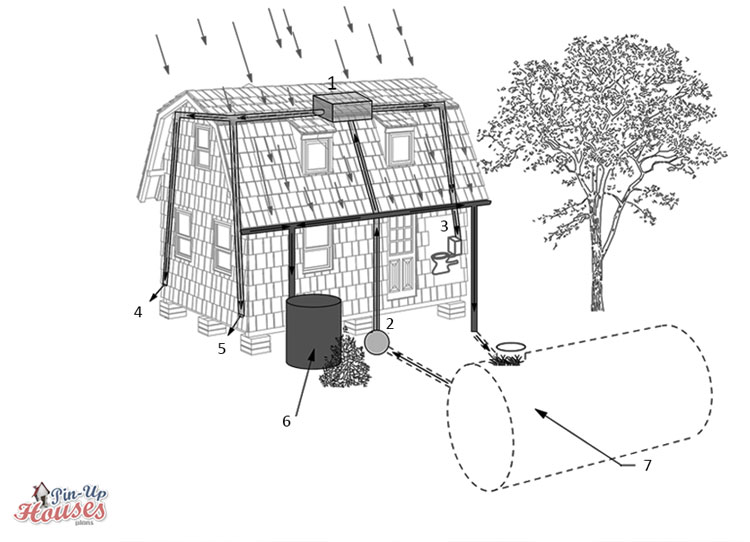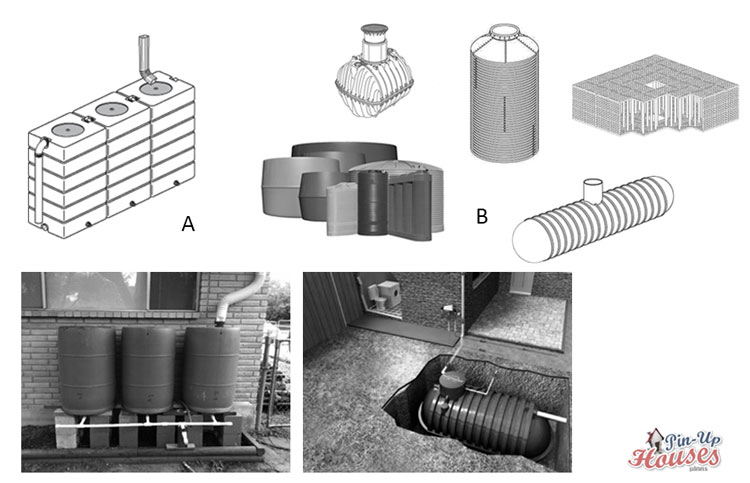
Being self sustainable and living off the land can be highly rewarding, but it’s not as simple as purchasing some rain barrels for your tiny house and waiting for it to rain. For a rainwater collection system to reach its full potential, you’re going to need some plumbing work done. Also, you may need to shift your approach to meet the laws in your state.
What is Rainwater Harvesting?
Rainwater harvesting refers to the collection of rainfall for personal use. The idea is you collect the rain from your gutters to use for gardening, washing and even drinking if treated correctly.
So, unless you plan on hoarding bottled water, rainwater harvesting is essential for living off the grid.
The effectiveness of your rain harvesting will always depend on rainfall and the quality of the system. Still, it’s possible to collect enough water to service both the garden and faucets in your tiny house.
Until recently, there was a stigma surrounding concepts of capturing the rain. Many Americans believed or still do, that it’s illegal to harvest rainwater.

Is it Illegal to Collect Rainwater?
In the United States, it’s not illegal to harvest rainwater for personal use. The Federal Government has no restrictions in place, but some U.S. states are not as open to the idea as others.
The states that do have restrictions are largely concerned with the amount of water harvested and how it is used.
The World Water Reserve reveals that currently 12 U.S. states have restrictions on rainwater use. These restrictions vary from state to state with some, like Georgia, specifying that collected water can only be used outdoors.
Colorado has always been the most restrictive state for rainwater harvesting. It wasn’t until laws passed in 2009 and then again in 2016 that restrictions eased, although they are still strict.
In Colorado, residents can only collect up to 110 gallons of rainwater across no more than two rain barrels. The collected rain can only be used on the property in which it is harvested and only for gardening purposes.
Looking to its neighbor, Utah allows the collection of rainfall for personal use. Up to 2,500 gallons can be collected and stored, so long as residents are registered with the Division of Water Resources. If unregistered, no more than 100 gallons can be collected.

Still Wild in the West
So why are states like Colorado and Utah restrictive? It all dates to age-old laws surrounding prior appropriation. These first come, first serve laws saw early settlers – mainly farmers – laying claim to land with catchments or bodies of water. The idea was that any rainfall that flowed to these properties belonged to the farmer.
Even the rainfall that landed on your roof and flowed through your gutters belonged to the farmers, from a legal standpoint. So, if you directed the rainfall to a water tank, you were essentially stealing. These laws have since changed, but only slightly.
According to The Washington Post, legal experts and academics continue to criticize these outdated prior appropriation laws comparing them to wild west principles, but recognize that they are so deeply embedded in the culture of the western states that they won’t be going anywhere.
However, it’s not all doom and gloom. Most states see the benefits of harvesting rainwater. Some are even offering incentives to encourage citizens to collect water for personal use.
In California, Santa Monica residents are eligible for rebates of up to $2,000 for installing tanks with a capacity over 500 gallons. Washington has a similar scheme, with local vendors offering up to $1,200 for adopting certain landscape enhancements such as redirecting downpipes to rain barrels.

Australia Leading by Example
Look down under, and you will discover that Australia is championing the modern rainwater harvesting movement. Due to the arid and vast nature of the landscape, collecting rainwater has always been crucial for Aussies.
It’s common to see a roof plumber in Australia connect a home’s gutters to a water tank and then have it pumped back to the house for washing and drinking.
Recognizing the importance of rainwater harvesting, Many Australian states have made water tanks a legal requirement for new homes being built and for those in areas at higher risk of wildfire.
Rainwater Harvesting Australia reports that 26% of households already have water tanks installed which save those citizens $540 million a year on their water bills. The other financial benefit is that the collected water eases the strain on stormwater drains, also reducing management costs.
Moving Forward
The population of the United States is 13 times the size of Australia’s, so it’s easy to see the immense benefits that rainwater harvesting can bring to those who install water tanks.
If you’re building a tiny house away from civilization, there’s a good chance that you will need to explore rainwater harvesting options, of which there are many. Just be mindful of the local laws, and be sure to speak with your local water authority to see what’s permitted in your area.








